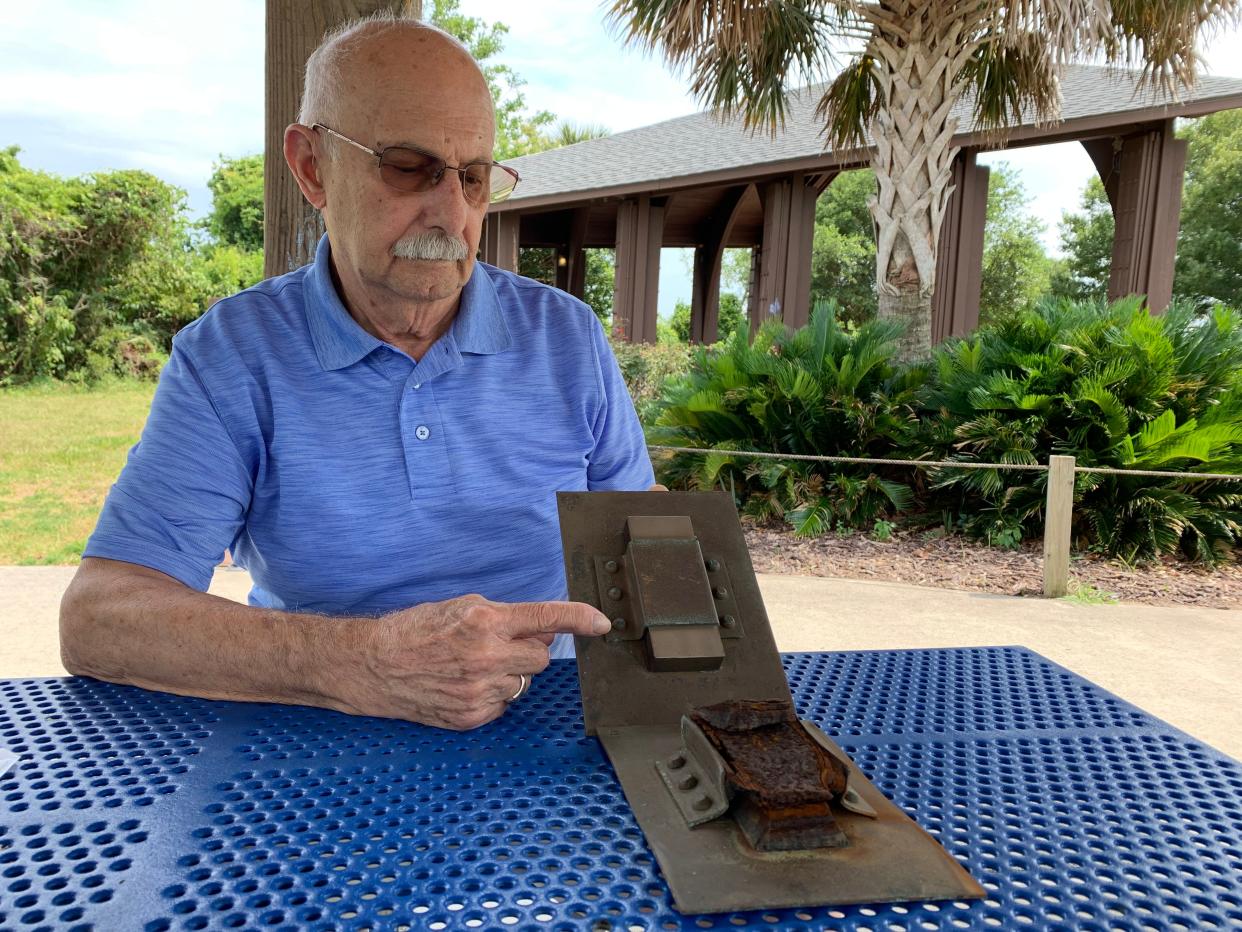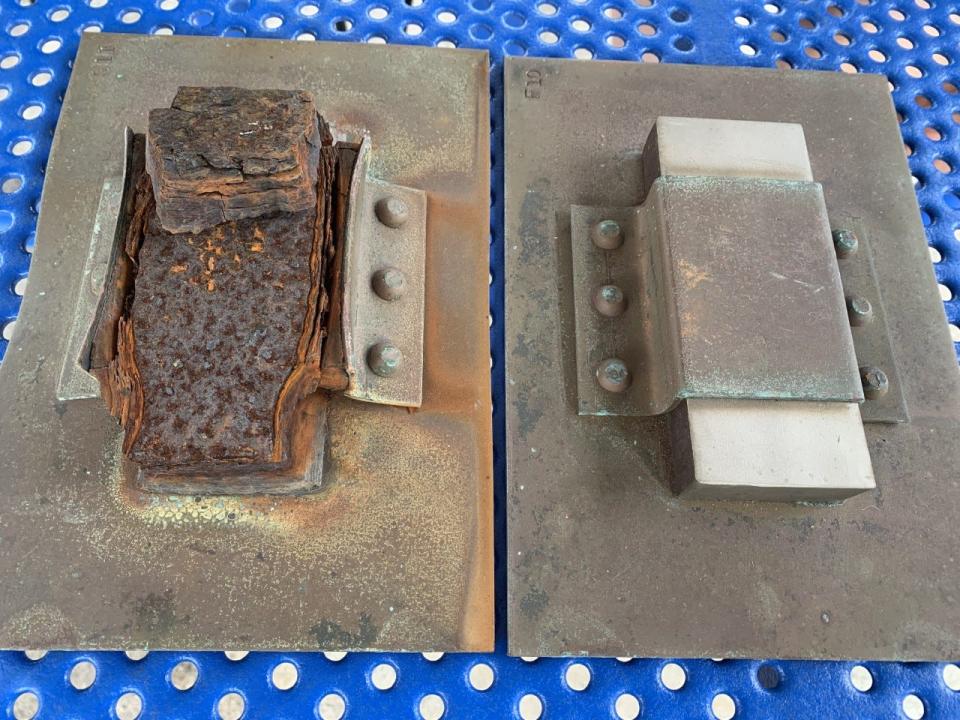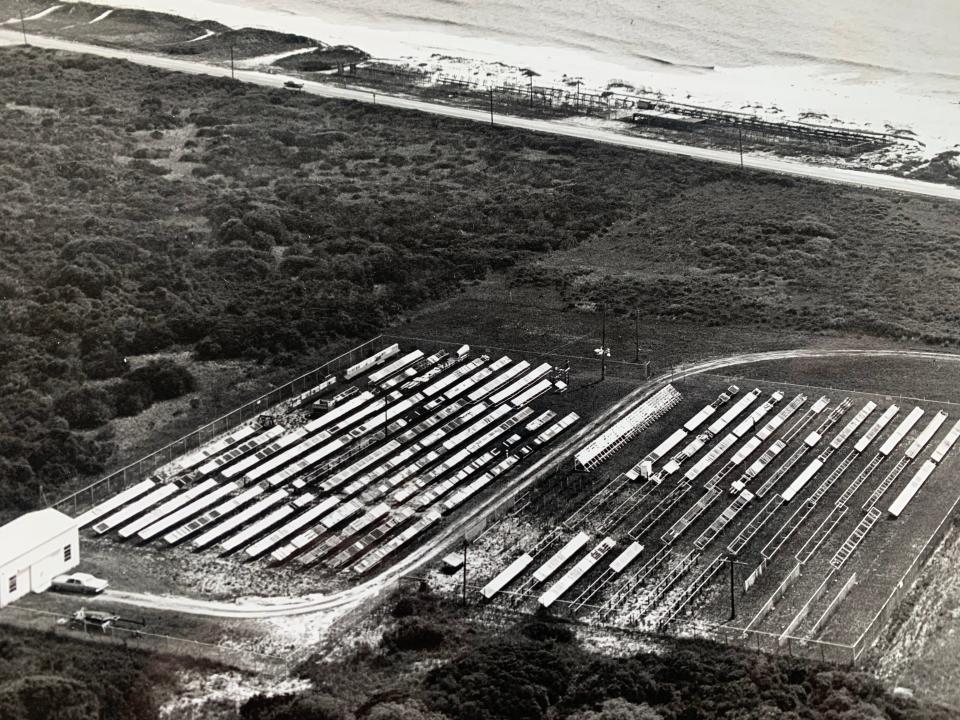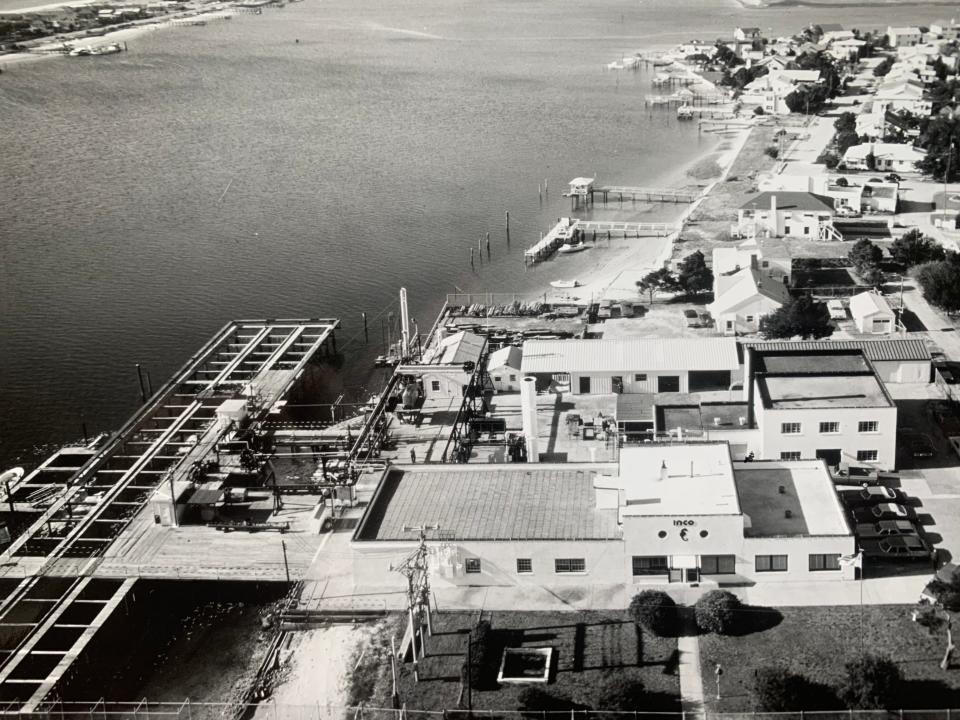Wilmington's secret connection to the Statue of Liberty

After 100 years standing tall above New York Harbor, Lady Liberty needed a facelift.
Over the years, the salt-laden sea air and sea spray of her maritime environment had taken their toll, causing the iron skeleton supporting her copper skin to deteriorate. As National Park Service leaders planned repairs, they turned to corrosion experts in Wrightsville Beach and Kure Beach.
The LaQue (pronounced la-KWEE) Center for Corrosion Technology tested the materials that would hold up the Statue of Liberty before its skeleton was replaced in 1986, when she turned 100 years old.
The world-renowned center has been called "the largest and most effective marine corrosion test site in the world," by leading researchers in the material science field.

Five materials were fastened to a slanted test panel approximately 80 feet from the ocean and left to face the elements for the next four and a half years. As the other samples rusted and twisted with corrosion, the stainless steel test block remained largely unchanged.
It was clear that Lady Liberty's new skeleton needed to be made out of stainless steel.
Bob Kain still has the blocks of metal that helped rebuild the Statue of Liberty's new supports. He keeps them wrapped in Ziploc bags and transports them carefully in a cardboard box.
Over the years, the metal blocks have seen even more rust and corrosion and the bottoms of the Ziplocs are littered with chunks of rusted metal. Kain salvaged the materials from the LaQue Center when it shut down in 2005, closing a more than 60-year run in the Wilmington area.
An enigma for beachgoers
Fifty years ago, a trip to a stretch of Kure Beach might have yielded glimpses of chromium bumpers, air conditioning units, window frames and broad testing platforms rising over the sand in an eclectic and mystifying array.
A sign from the U.S. Department of Defense encouraging people to "keep off" the site seemed to make it even more mysterious, said Bopinder Phull, who worked as a principal corrosion scientist at the LaQue Center.
For roughly 75 years, scientists and technicians in Kure Beach and Wrightsville Beach used these samples to measure how saltwater, seaspray and salt-laden seabreezes affected materials, ranging from stainless steel and aluminum to paint coatings and various metal alloys.
In addition to testing everyday items like air conditioners, barbecue grills and light fixtures, the center played a key role in metals testing for Battleship NC, U.S. Navy, the Brunswick Nuclear Plant and the International Space Station, among other notable customers.
Despite its renowned in the niche world of materials science, the LaQue Center wasn’t well-known in the beach towns it called home. Shortly after Phull arrived in Wrightsville Beach in the 1980s to work at the center, he went to a Wrightsville Beach bar and began talking with some locals.
When they asked what he did for work, he told them he was working at the town’s corrosion center. In response, a local agreed the area did indeed have a problem with beach erosion.
“I was like nobody knows what this is,” Phull said.
Phull and Kain say the center, which closed in 2005, hasn’t seen much community recognition. Historical collections in Wrightsville Beach and Kure Beach include some information about the centers, but it's not very in-depth, according to Kain. He hopes that will change.
Kain is working to get a historical marker placed at the site of the Wrightsville Beach and Kure Beach testing centers. A plaque at one time marked the site of the Kure Beach testing center, but it was taken down when researchers left the site for good in 2007.
Kure Beach: where it all started
The LaQue Center got its start at the Dow Chemical Company and Ethyl Corporation plant, which opened in Kure Beach in 1934.
The plant extracted bromine from seawater taken directly from the Atlantic Ocean. Bromine became particularly important during World War II because it was used to make ethyl bromide, an additive for airplane fuel that allowed planes to fly at higher altitudes.
However, the plant’s water intake wasn’t designed for the seawater coming into the plant, which proved to be more corrosive than expected.
Aquatic plants and microscopic animals added to the damage, and, in the first six months, the plant's bulkheads were eaten up with aquatic worms and mollusks, according to archived writings about the plant's early years.
Francis “Frank” LaQue, a metallurgist with the International Nickel Company, happened to visit the plant and offered suggestions to stave off the corrosion. Later, LaQue got permission to test metal plates for the U.S. Navy in the plant’s intake canal.
From there, the testing continued to grow.
The testing grounds grow
The International Nickel Company established a formal testing site in Kure Beach in 1935. The site initially focused on comparing corrosion resistance in low alloy steels with carbon steel, but other materials were soon added, including products from competitors.
The company typically offered testing to competitors at no cost, according to Kain.
“In terms of budgeting, this was just a drop in the ocean,” Phull added.
LaQue is recognized in the field of material science as a pioneer in corrosion control. He devoted much of his career to research and development with the International Nickel Company. He directed some of the testing work at Wrightsville Beach and Kure Beach although he was never based in either location, Kain said.
He was affectionately known by the center’s long-term employees as “Uncle Frank."

In Kure Beach, materials were exposed to harsh coastal conditions while mounted on angled rectangular platforms that allowed technicians to test corrosion from the salty sea breezes, seasprays, ultraviolet radiation from the sun, rain and the occasional hurricane. The site had two primary testing stations – one located approximately 80 feet from the ocean and another situated 800 feet from shore.
The distance allowed staff to gauge the impact of proximity to the ocean.
The Ethyl-Dow plant closed in 1946, but testing persisted on the beach and in the Eythl-Dow intake area. When the plant was dismantled, the International Nickel Company established a new testing station along Banks Channel in Wrightsville Beach using some of the plant's equipment.
Today, the site of the former LaQue Center in Wrightsville Beach is home to multi-million-dollar homes, but in its inception, the center consisted of a central testing building, which was distinguished by a pair of port hole windows and a painted seahorse, along with a machine shop and outbuildings that could be reconfigured, depending on the needs of the experiment.
The Wrightsville Beach location also included a wharf that allowed researchers to immerse materials in the water – something that couldn't be done at the Kure Beach site.
The facility pulled through several hurricanes over the years. But in 1996, Hurricane Fran in 1996 caused extensive damage to the wharf along with the building's offices and lab equipment. It took the LaQue Center nearly six months to come back from the storm.
Residential development hampers growth
As Wrightsville Beach saw more residential development, the center encountered pushback as it tried to expand.

In 1999, for instance, the Wrightsville Beach Board of Aldermen capped the facility’s pier length to 100 feet, which was shorter than its existing dock. The decision came after the board redrew a pier line to settle a lawsuit with the International Nickel Company.
More silt and higher boat activity in Banks Channel made it more difficult to experiment, especially at low tide, Kain said.
Eventually, the value of the land outweighed the money the company was making through its testing contracts. The International Nickel Company sold the site to a group of investors in 1998.
The Wrightsville Beach site closed in 2005 and the facility was demolished in 2006. Some of the testing remained ongoing at the Kure Beach site until 2008 because of contract obligations, Kain said.

Phull and Kain have fond memories of working at the LaQue Center and still get together now and then to reminisce about their time there. Although the center is now gone, its research is memorialized in hundreds of papers and books referenced by scientists and researchers worldwide.
“There weren’t many sites worldwide to do this type of testing,” Phull said. “All good things come to an end."
Reporter Emma Dill can be reached at 910-343-2096 or edill@gannett.com.
This article originally appeared on Wilmington StarNews: Wilmington testing center helped restore Statue of Liberty

